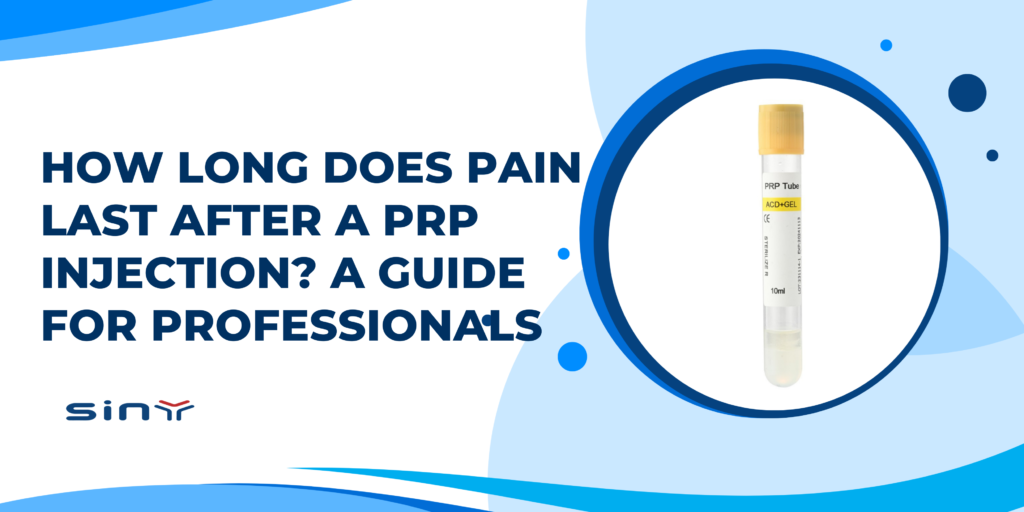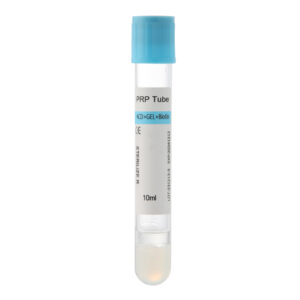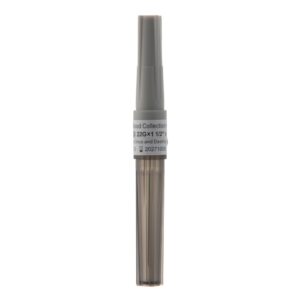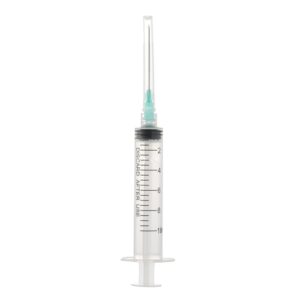How Long Does Pain Last After a PRP Injection? Platelet-rich plasma (PRP) therapy has become a cornerstone in regenerative medicine, offering a minimally invasive and effective treatment option for various musculoskeletal conditions. For clinics, medical staff, and distributors of related medical supplies, managing patient expectations is crucial. Among the most common questions is: “How long does pain last after a PRP injection?” This guide aims to answer this question in depth and clarify the key factors influencing the patient’s recovery experience, particularly the quality of the PRP product.
The Typical Pain Cycle After PRP Injection
Experiencing some degree of pain and discomfort after a PRP injection is normal and, in fact, a sign that the treatment is initiating its effect. PRP works by inducing the body’s natural inflammatory response to promote tissue repair and regeneration. This inflammatory reaction is a necessary step in the healing process and typically peaks within the first 24 to 72 hours post-injection. During this period, patients may experience moderate pain, swelling, and stiffness at the injection site. Generally, this acute pain significantly subsides within a few days to a week. Subsequently, mild soreness or discomfort may persist for several more weeks as the tissues begin to repair and regenerate.
Key Variables Influencing Post-Procedure Pain
While the timeline above provides a general reference, multiple factors can influence the duration and intensity of post-procedure pain for each patient. These factors include:
- Injection Site: Injections into soft tissues like tendons or ligaments typically elicit a more pronounced post-procedure reaction and longer-lasting soreness compared to intra-articular joint injections.
- Individual Differences: The patient’s overall health, age, pain threshold, and the severity of the injury all impact their recovery process.
- Post-Procedure Care: Adherence to proper post-injection guidelines, such as limiting activity in the initial phase, is crucial for pain management and recovery. Premature strenuous activity can exacerbate pain and delay healing.
- Injection Technique: The precision of the operator’s technique can also affect patient comfort.
PRP Product Quality: An Often Overlooked Critical Factor
Among all factors influencing post-procedure pain and ultimate efficacy, the quality of the PRP product used is a decisive, yet often underestimated, variable. A wide array of PRP preparation systems exists on the market, yielding PRP with significant differences in composition, such as platelet concentration, leukocyte content, and the presence of red blood cell contamination. Some studies suggest that PRP with higher leukocyte content (L-PRP) might induce a stronger inflammatory response, leading to more intense post-procedure pain. Therefore, choosing a PRP system capable of consistently producing high-concentration, high-purity, and compositionally controlled PRP is vital for optimizing treatment outcomes and enhancing patient satisfaction. To learn more about our commitment to quality, visit our About Us page.
Why Choosing a Quality PRP Supplier is Crucial
For clinics and distributors, selecting a reliable PRP supplier means more than just procuring products. An excellent supplier ensures that their PRP kits and centrifugation equipment are certified to rigorous medical standards, consistently producing high-quality PRP. This directly relates to the safety and efficacy of the treatment. Furthermore, professional suppliers provide comprehensive training and ongoing technical support, ensuring that medical staff can proficiently operate the equipment and maximize the effectiveness of every treatment. Partnering with a trusted supplier means selecting stable, reliable, and efficient treatment solutions for your clinic and clients, ultimately leading to increased patient trust and business success. To discuss how our products can benefit your practice, please Contact Us.
FAQs
Q: How long does it take to see results after a PRP injection?
A: PRP is not like a steroid injection that offers immediate symptom relief; it works by stimulating the body’s own repair mechanisms. Typically, patients begin to experience initial improvements within several weeks post-injection, while significant pain relief and functional improvement may take up to 3 to 6 months, depending on the treated area and the severity of the injury.
Q: Is increased pain after injection normal?
A: Yes, initial increased pain after injection is part of the expected inflammatory response triggered by PRP therapy, indicating that the body’s healing mechanisms have been activated. This pain is usually most noticeable within the first few days and gradually subsides thereafter. However, if pain intensifies after 10–14 days or comes with signs of infection such as fever, redness, or unusual swelling, you should contact a doctor immediately.
Q: How can post-procedure care help reduce pain?
A: Post-procedure care is crucial for recovery. It is recommended to rest appropriately and avoid strenuous activities for the first 48 hours after injection. Unlike some other injections, ice application is generally not recommended after PRP injections, as it may inhibit the necessary inflammatory response. Additionally, non-steroidal anti-inflammatory drugs (NSAIDs) like ibuprofen should be avoided as they may interfere with the healing process. Always follow your healthcare provider’s specific post-procedure instructions.
Q: Are all PRP products the same?
A: Absolutely not. Different brands of PRP preparation systems vary significantly in their technology and design, which directly impacts the concentration, purity, and presence of other potentially adverse cellular components in the final PRP product. Choosing a verified high-quality PRP product like SinyPRP ensures optimal therapeutic components, thereby maximizing efficacy and improving the patient’s post-procedure experience.
Summary
In summary, pain after a PRP injection is a temporary, normal signal of healing. While multiple factors influence the duration of pain, clinicians can maximize the patient’s recovery experience and ultimate treatment outcomes by utilizing high-quality PRP products. A top-tier PRP system that delivers high-purity, high-concentration platelets is key to achieving predictable and reproducible successful treatments. We encourage all professionals dedicated to providing the best regenerative medicine services to understand the differences between various PRP systems. To learn how advanced PRP preparation technology can elevate your clinical practice, please visit our Products page.





